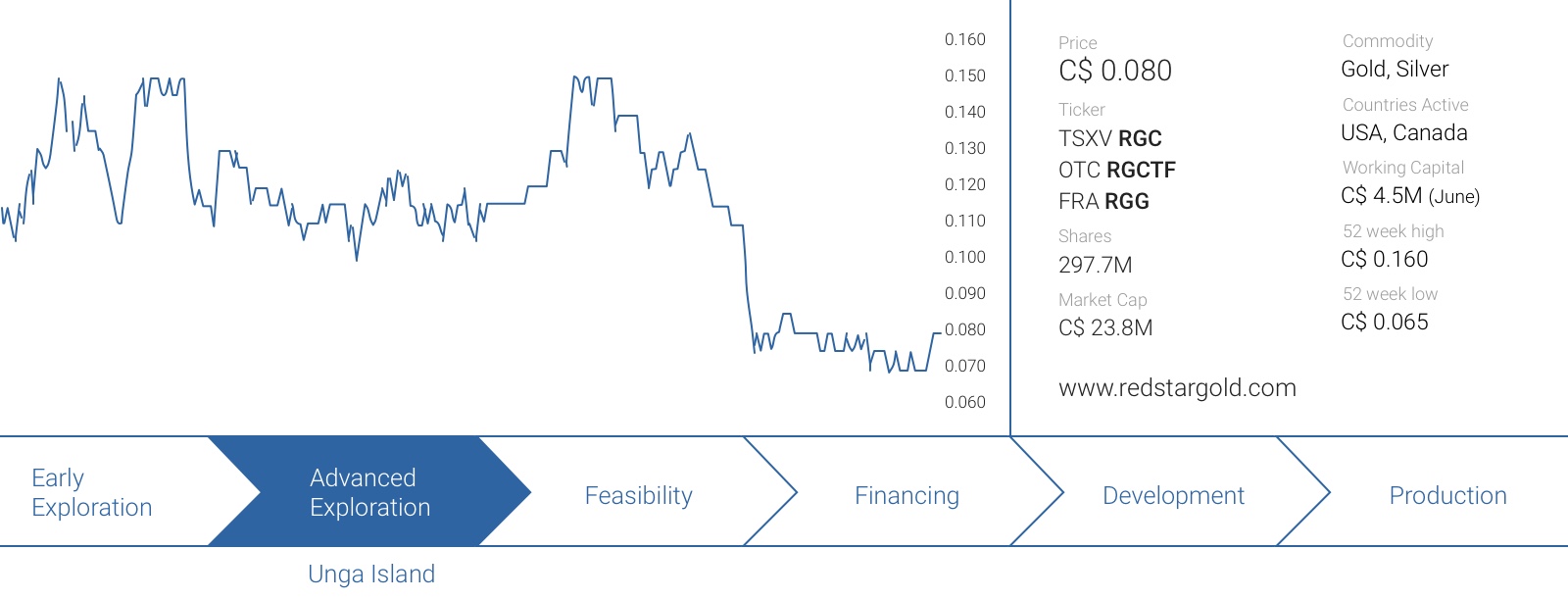A few months ago, Redstar Gold (RGC.V) released a set of drill results from the summer drill program at Unga Island, and even though the company’s drill core contained visible gold, the assay results were disappointing.
As we mentioned before, exploration isn’t an exact science and if anything, Redstar continues to gain a better understanding of the mineralized structures at Shumagin. In fact, Redstar might not have drilled deep enough, says CEO Peter Ball. Below, you can find the results of a Q&A session with Redstar’s CEO.
Stay in touch with our weekly newsletter and when we publish a report. Unsubscribe at any time.
Summer 2017 Exploration Program
The assay results from the Shumagin Spring Drill Program were very disappointing. Even though you encountered visible gold in the core, the average gold grade was below expectations. We all know exploration never is an exact science, but do you have an explanation of what went ‘wrong’?
The Spring Drill Program was designed to examine and test the structure along strike to the southwest. Technically we were pleased with the program, but yes, the gold grades were significantly lower than expected. The program did successfully trace and identify the Shumagin structure to the southwest and we now believe, from the additional knowledge of the recent Fall Drill Program, that the boiling zone may exist below the horizon drilled. Please refer to the recent long section presented in the Fall Drill Program news release.
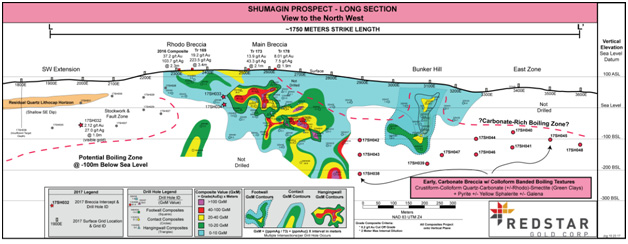
Redstar has also extended the strike length of Shumagin by an additional 400 meters based on a soil sampling program. However, if the grade ‘isn’t there’, have you mentally written off the western extension of the Shumagin zone?
The Shumagin southwest extension remains an area to complete further work, noting the visible gold in Hole 32, and the presence of associated high silver grades and related geochemistry within the holes. The area may at some point require a drill program designed to potentially drill deeper and/or further to the southwest. The company’s epithermal consultants think there’s a chance we may intersect the boiling zone by targeting a zone just below our drill holes completed in the Spring Drill Program. Drilling also identified a Lithocap to the southwest, which again is indicative that we may be at the top part or expression of a potential system at depth, thus more work is required. Epithermal shoots are known to be have surface expressions with strike lengths of 200 to 500 m. We see signs of potential opportunity an additional 100 to 200m to the southwest. Again technically, the information gained in the southwest extension drilling was positive and requires to be followed up at a later time.
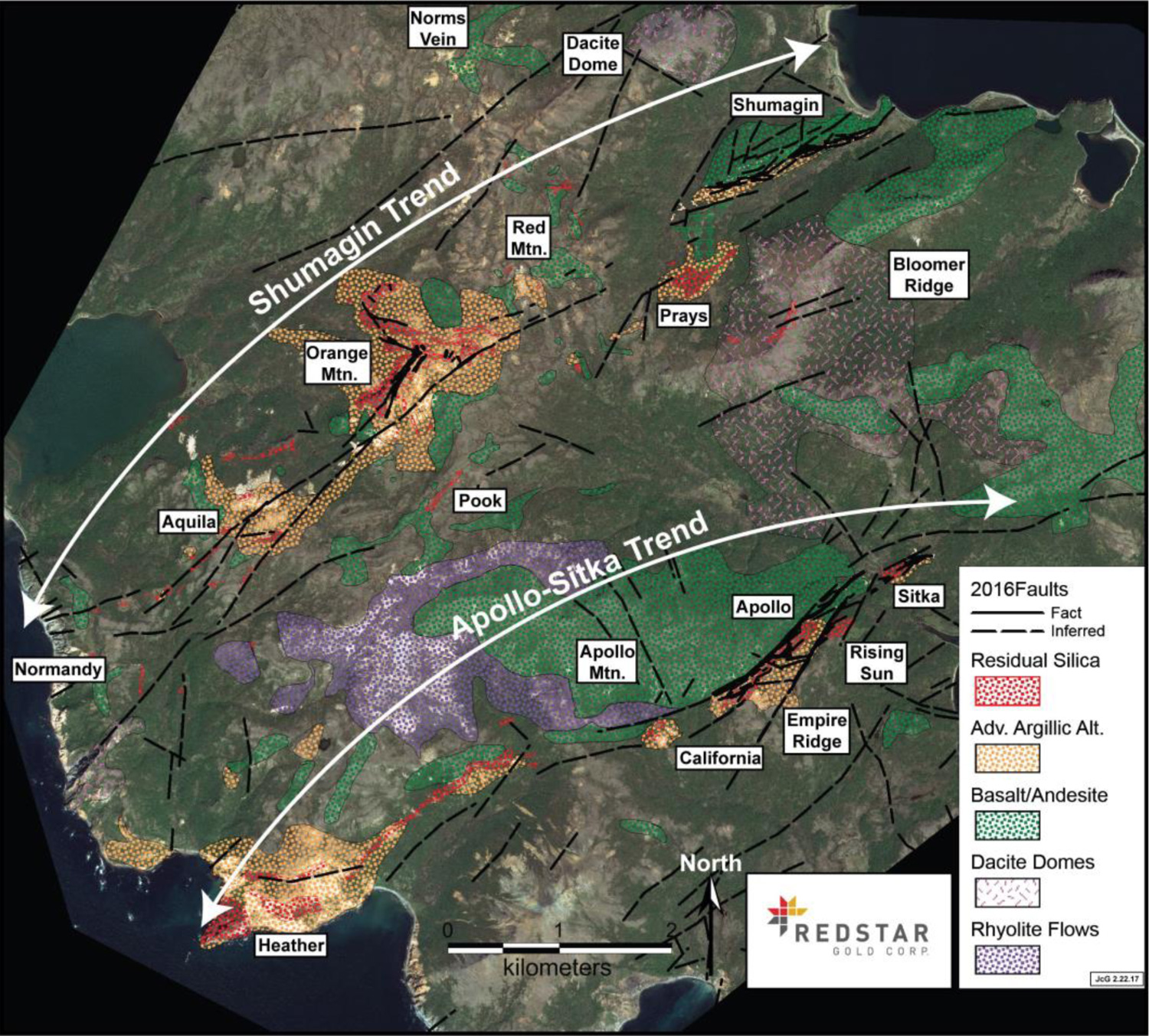
Fall 2017 Exploration Program
You have announced a new drill program of up to 3750 meters at and around Bunker Hill and the East Zone. Understandable, that’s the complete other side of the Shumagin zone than where you were drilling this summer. What are you trying to achieve with this new drill program?
The 2017 Fall Drill Program was designed to follow up on very successful drill programs in three different drill programs in 2011/2015/2016, which yielded high grade gold intercepts at the Main Breccia and Bunker Hill Zones. In the drill program, we wanted to test the system/shoot at depth in and around these two zones, and to further test to the NE at the newly discovered East Zone to determine the structural controls of the three epithermal shoots. Additionaly, the Fall Drill Program will provide guidance for the next drill program in 2018, which will be designed to complete infill drilling to asssit in completing a mineral resource estimate.
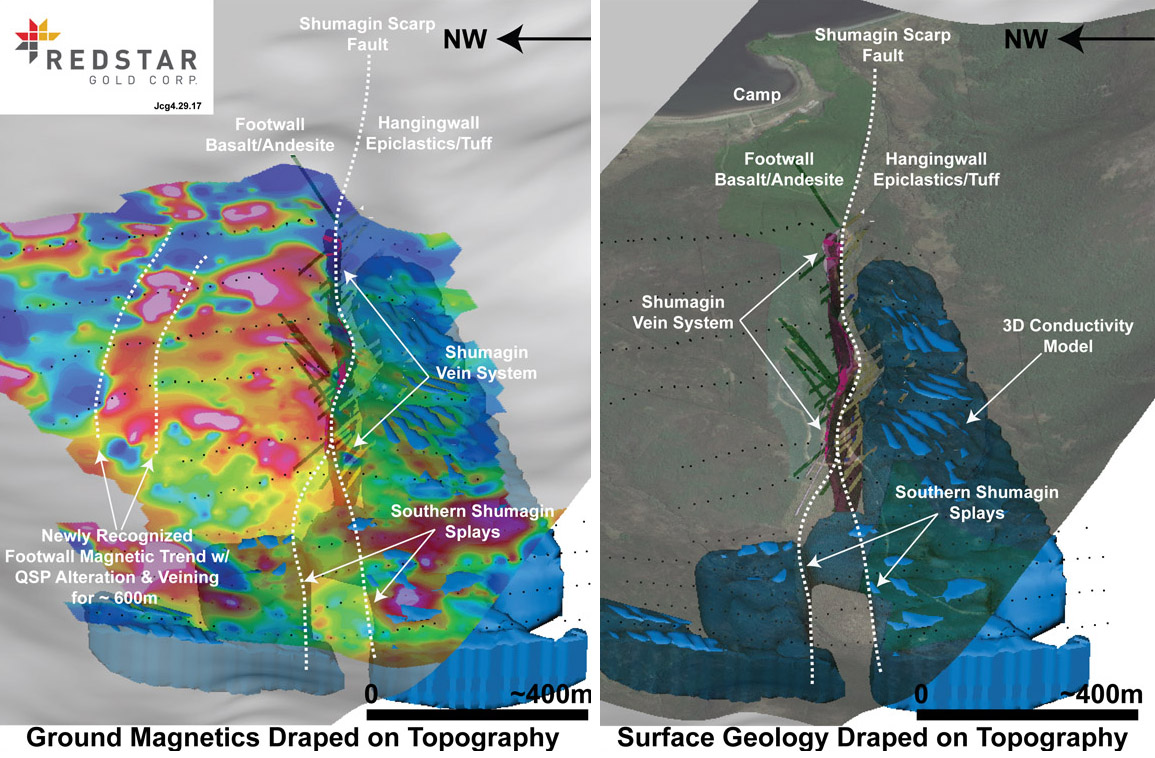
At Bunker Hill, last year’s drill program intercepted several high-grade but narrow intervals such as 1.5 meters of almost 17 g/t gold and 0.76 meters containing almost 38 g/t gold. You seem to have planned 4 holes for this zone; what are your expectations for the deeper parts of Bunker Hill?
The goal of these holes was to test the down plunge of the Bunker Hill Zone. Our expectations, noting the logging of Colloform-carbonate in the core, is grades similar to what have been seen historically.
Readers might forget a trend similar to and parallel with the Shumagin trend is located just a few kilometers to the southeast. You will also drill-test the Rising Sun and Sitka zones on the Apollo Sitka trend. This is the zone where historical records indicate approximately 150,000 ounces of gold were recovered from high-grade veins. What are the plans here?
Redstar has identified multiple gold zones outsite of the Shumagin Gold Zone. Rising Sun is one of these known 14+ gold zones and our goal is to highlight the district potential across the island. At the Rising Sun Gold Zone, we intersected the desired Shumagin Style breccias in both holes that were drilled, which yielded breccieas similar to historical drill holes that were drilled at the historical Apollo-Sitka Gold Mine which operated over 100 years ago.
Will you complete other exploration activities besides drilling? What about the other exploration targets on the Unga Island?
We continue to complete exploration reconnaissance exercises across the island in order to understand the multiple systems and structural controls to help in drill targeting across the island. As you know, it’s a very large district, and continues to indicated excellent potential to yield additional Shumagin type mineralized gold zones.
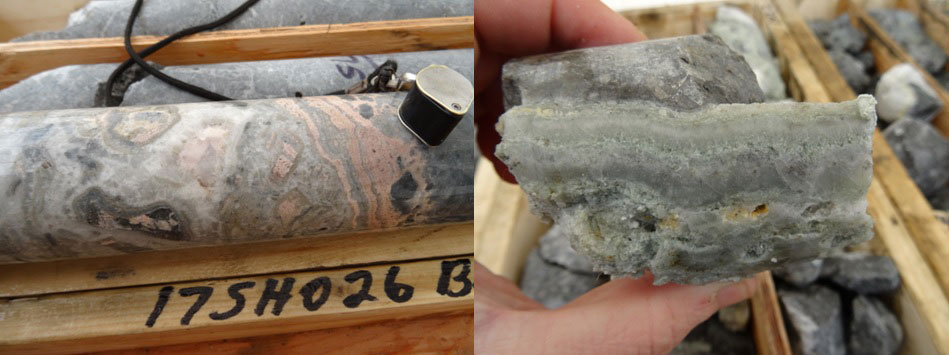
How important is it for the exploration thesis at Unga island to have intersected the Shumagin-style mineralization in all thirteen drill holes? What is the importance of encountering these colloform-carbonate structures?
The Shumagin style breccia is the desired structure that historically in previous drill programs has yielded significant gold grades and is the “signature” mineralization to target to have a higher probability to effectively find gold grades. Colloform textures are indicative of active boiling and mineral deposition during hydrothermal activity within the vein system and commonly found in high-grade vein systems globally. The newly drilled textures show strong resemblance to the early-stage high-grade colloform-carbonate-pyrite breccias previously drilled in 2015 within the Main Breccia such as Hole 15SH012;{64-66m} which intersected 2 meters containing 35.25 g/t gold and 209 g/t silver.
Will Redstar Gold will design a follow-up drill program after you receive the assay results of the 13 holes? What will the follow-up program be focusing on? The geological structures and trends? Or will you be ‘drilling for grade’?
We will be completing a new updated geological model in Q1 of 2018, and now that we have a better understanding on the four zones (Main Breccia, Bunker Hill, East and Rising Sun) we will focus on delivering grade through the drill bit to add to a future resource model. On top of that, we will also look to test other 14+ known gold bearing zones across the island. These 14+ gold zones have a combined strike length of approximately 35-40 kilometers of veins and identified structures.
Corporate
What is your current cash position and anticipated year-end cash position after wrapping up your fall exploration program?
We expect to end the year with a cash position of approximately C$2.5M.
Redstar Gold still has a sizeable stake in NV Gold (NVX.V) which acquired your Nevada portfolio. This allowed the Redstar shareholders to retain exposure to the potential exploration success in Nevada. How are things going there?
NV Gold, where Redstar controls 19.5% or 6.172M shares of the company and 2 board seats, is run by three well known highly technical and seasoned geologists: Quinton Hennigh, Odin Christiansen and John Watson (CEO). All three have multiple success in Nevada and globally and have been part of various gold discoveries, with Novo Resources (where Quinton Hennigh is CEO) as front runner this year. In Nevada Hennigh has identified a few priority prospects for NV Gold to drill and they have attracted gold-focused investors such as Eric Sprott and Ralph Aldis (US Global) to take large share positions before they drill these interesting targets. Redstar’s share position is currently worth about $2M, and we are looking forward to see NV Gold unlocking value from its large land package.
Disclosure: Redstar Gold is a sponsor of the website. The author has a long position in Redstar Gold.
Stay in touch with our weekly newsletter and when we publish a report. Unsubscribe at any time.
